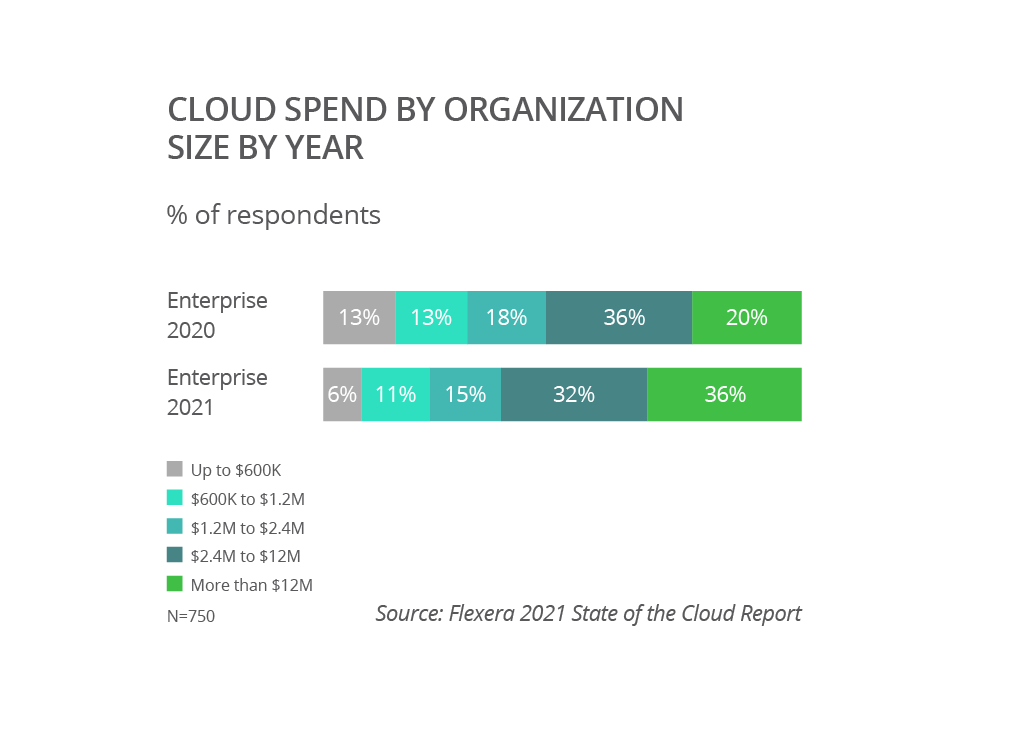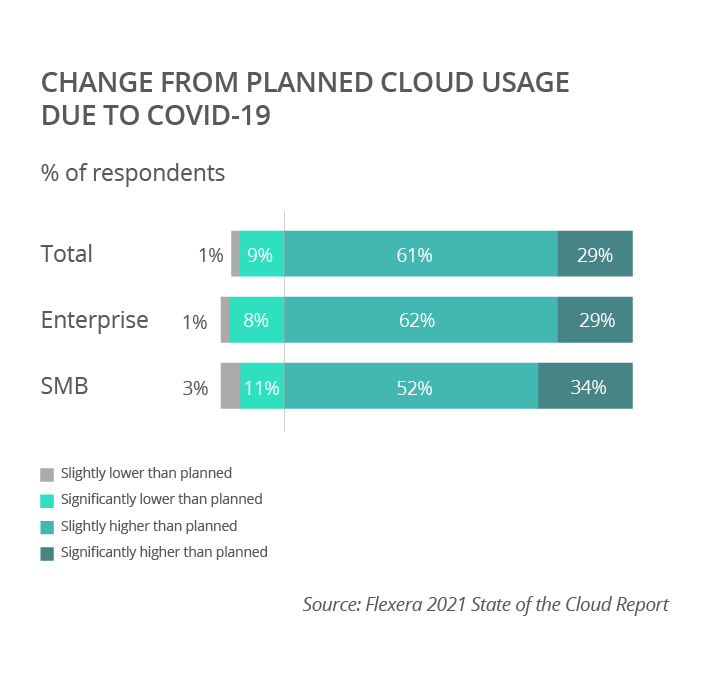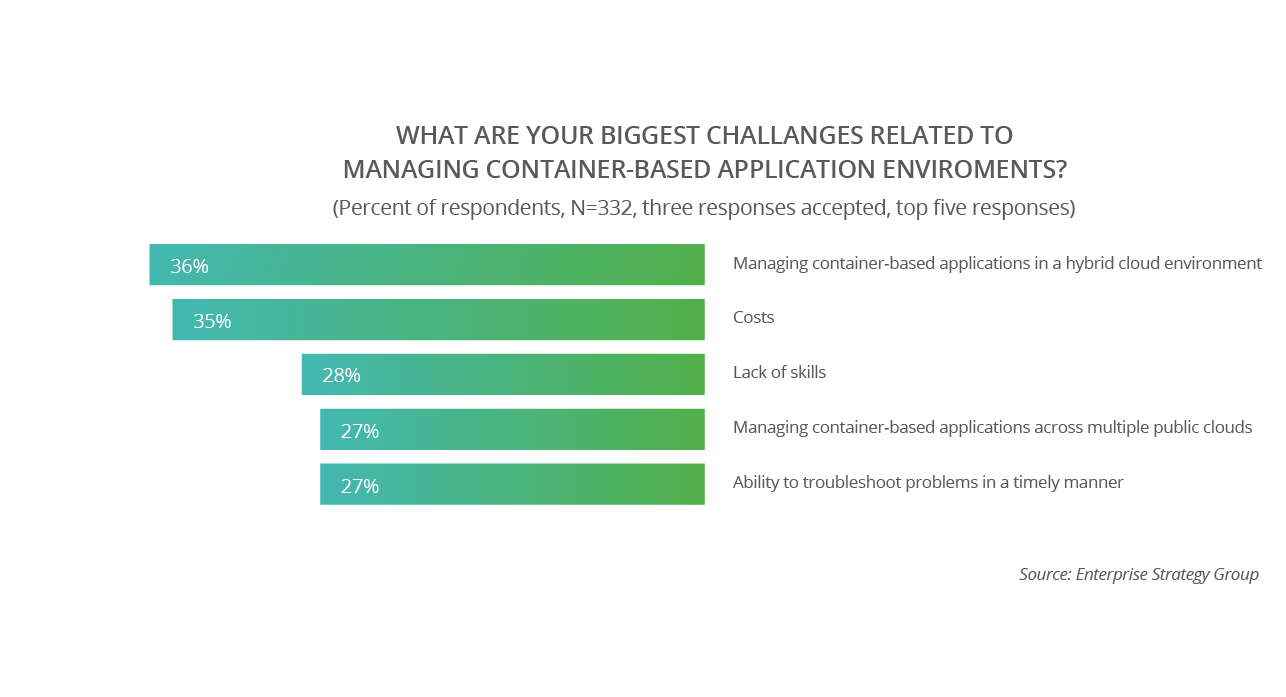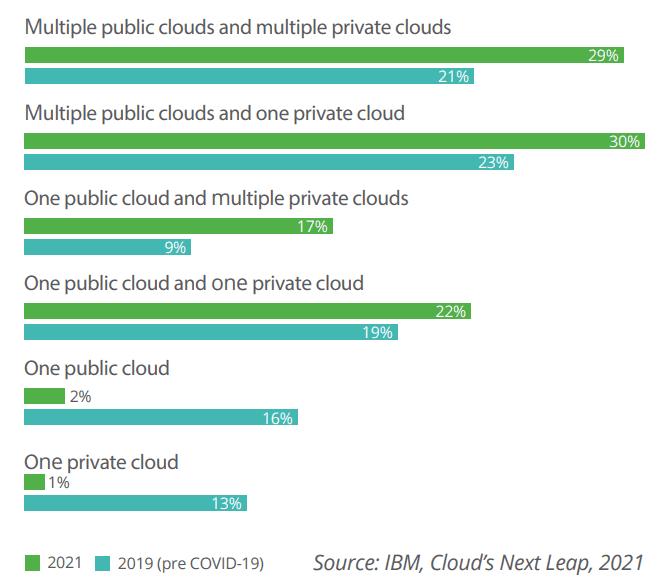Cloud Nimble for Multi-Cloud and Hybrid DevOps
Adopting Best Practices Across a Hybrid/Multi-Cloud Environment
Executive Summary
As leading enterprises evolve their business transformation through cloud computing, more rely on hybrid and multi-cloud architectures to speed innovation, stay best-in-class, and reduce the risk of vendor lock-in. Cloud native solutions were only the start; forward-looking DevOps engineers must now seek solutions that are cloud nimble, enabling them to spread critical workloads across multiple domains both public and private.
Cloud Native for the Forward-Looking Enterprise
For the modern enterprise, cloud computing is now the default model for applications, storage, and compute. As the range of providers and services expand, organizations recognize that cloud and cloud native tools are the key to business modernization.
Cloud transformation has accelerated with the rise of remote work, as businesses decentralize their operations. In the wake of COVID-19 restrictions, CIOs now plan on 34 percent of employees permanently working virtually, accelerating the shift of workloads to the cloud.
Organizations have found the benefits of using the cloud to innovate fast, and to make bold digital bets at minimum cost and risk while being able to scale on demand. The modern enterprise is now cloud-enabled, software-driven, and virtual.
Lessons Learned
What have these enterprises found in their cloud transformation process?
Migration is Hard
Transferring legacy tools, data, and processes to cloud native service environments is time-consuming, expensive, and requires a breadth of skills that teams may not possess.
Cloud Native Isn’t Enough
Often, there can be significant functional differences between a self-managed version of an application and its SaaS offering. When versions don’t have fully equivalent capabilities, it can be a major obstacle to maintaining a consistent operating model.
Best practices to achieve a consistent operating model across multiple clouds
Watch on demand
Different Teams, Different Needs
In an enterprise with many teams and diverse programming languages, one cloud seldom fits all. Services and platforms offered on one cloud provider may suit one developer group, while the needs of another may be best served by a different cloud. Yet those teams must share data with operating consistency across the organization.
Cost Trade-Offs
Organizations struggle to strike the right balance between the consumption-based OpEx model offered by a public cloud service and the CapEx investments to build a private cloud in their data center. A recent survey found that nearly 69 percent of respondents say that cloud vendor lock-in is a significant obstacle to improving business performance.
Security Consistency
Operating with a diverse ecosystem of cloud-based platforms, tools, and services each with their own protections, can make it challenging to maintain a consistent security posture throughout a software development lifecycle (SDLC).
Cloud Integration Challenges
Interoperating between cloud providers, either as a multi-cloud or hybrid strategy, brings unique struggles. Governance and compliance rules, for example, can vary between providers, as can security standards, making complex cloud infrastructures vulnerable to malicious exploits.
The Next Evolution: Cloud Nimble
The first stages of digital transformation have made cloud operations an established fact for the modern enterprise. Today, they seek even greater agility for their virtual operations through divestment from a single provider to multi-cloud and hybrid computing strategies.
In a 2021 survey of over 7,000 companies across 29 industries, only three percent reported using a single private or public cloud — down from 29 percent two years before. Fifty-nine percent of respondents claim to use a hybrid mix of private and public clouds.
Nearly four-fifths of those survey respondents say that the ability to have workloads be completely portable with no vendor lock-in is extremely important to achieving their digital transformation goals.
In this next iteration of enterprise cloud computing, it’s not enough for operations to be cloud native. They must be cloud nimble as well.
Cloud nimble enterprises demand the ability to run in any cloud, anywhere, so they can:
- Match cloud choice to best-in-class services for given tasks
- Allocate workloads to the lowest-cost provider for each
- Shift workloads for load balancing or to adjusting to demand pricing
- Keep data and compute services in geo proximity
- Maintain redundancy to help ensure five nines availability
- Employ a hybrid strategy to comply with security and/or regulatory requirements
JFrog Cloud Nimble for Cloud Native DevOps
The JFrog Platform is the market-leading set of solutions that enable a binaries-driven formula for DevOps success. It meets the cloud nimble requirements of today’s enterprises to enable full flexibility and operating consistency across on-prem, cloud, and hybrid environments.
Run On Any Cloud, Public or Private
The JFrog Platform meets the standard of cloud native DevOps to harness the growing commodification of cloud service. Architected around the standard technologies that enable the cloud’s benefits, and leverage standard tools (e.g., Docker and Kubernetes) for all cloud environments such as EKS, AKS, Anthos, or OpenShift.
A robust set of RESTful API and a command-line interface, make the JFrog Platform ready to integrate with your ecosystem of automation tools.
JFrog’s cloud nimble solution provides both choice and transparency. With the freedom to host a JFrog Platform account on any or each of the three major cloud providers (AWS, Google Cloud Platform, or Azure), you can ensure data proximity to the cloud ecosystem tools your teams will use.
For ease of billing, you can create a JFrog account through any of the cloud providers marketplaces, and pay your monthly subscription through your existing cloud credits.
Maintain a Consistent Security Posture
JFrog Artifactory’s industry-leading fine-grained permissions, and its integration with single sign-on through multiple protocols empower organizations to maintain the same high-quality protection of their software supply chain across multiple cloud domains.
With JFrog Xray, you can operate with consistent monitoring and reporting mechanisms for vulnerabilities and compliance scanning across all cloud environments, and implement a unified set of protocols to swiftly analyze impact and remediate.
Same Feature Set Everywhere
Every deployment of the JFrog Platform, whether deployed as SaaS, self-managed in public cloud clusters or on private servers on-prem, includes the same market-leading feature set that enables DevOps success.
This empowers an organization to operate their SDLC with a consistent operating model across all execution environments. Enterprises can readily implement multi-domain automation, interoperating across clouds.
Distribute Across Best-in-Class Services
Where one cloud may provide the most optimal storage services or security, another may offer the best-of-breed VCS or automation. Teams targeting different computing languages or runtimes may prefer to choose their own cloud-based development toolset. Each may require locality within their own cloud service for fast access in delay-sensitive applications.
The cloud nimble JFrog Platform empowers Site Reliability Engineers with the freedom to choose best-fit cloud providers for different segments of the SDLC or to satisfy the particular needs of a diverse set of teams, while maintaining governance of packages and binaries within a secure, single circle of trust.
Transparent Cloud Migration
You can maintain operational continuity even after migrating Gigabytes or Terabytes of accumulated packages, builds, and metadata from one JFrog Platform instance to another in the cloud.
With the JFrog Platform’s same market-leading feature set in every environment, your development teams can switch over to a newly migrated cloud installation without any break. They may never even know that there’s been a change.
Multi-Domain Automation
With deployments of the JFrog Platform in each cloud, you can readily interoperate your SDLC between environments. Using JFrog APIs, enterprises can securely deliver binaries and release payloads from one cloud environment to another.
Replication of repositories enables your teams to share artifacts and builds across domains, regions and providers, while preserving data locality for each team to operate with a common set of DevOps practices at full speed.
Release DevOps Into the Clouds
Adopt binary management and SDLC best practices, with the cloud nimble JFrog Platform, and enable full flexibility and operating consistency without tradeoffs across on-prem, cloud, and hybrid environments. Innovate faster, maximize vendor choice and flexibility and optimize your capital expenditure mix with a consistent security posture and best-in-class operating model.
![[White Paper] Multi-Cloud Thumbnail](https://speedmedia2.jfrog.com/08612fe1-9391-4cf3-ac1a-6dd49c36b276/media.jfrog.com/wp-content/uploads/2021/12/02193352/White-Paper-Multi-Cloud-Thumbnail.png)







